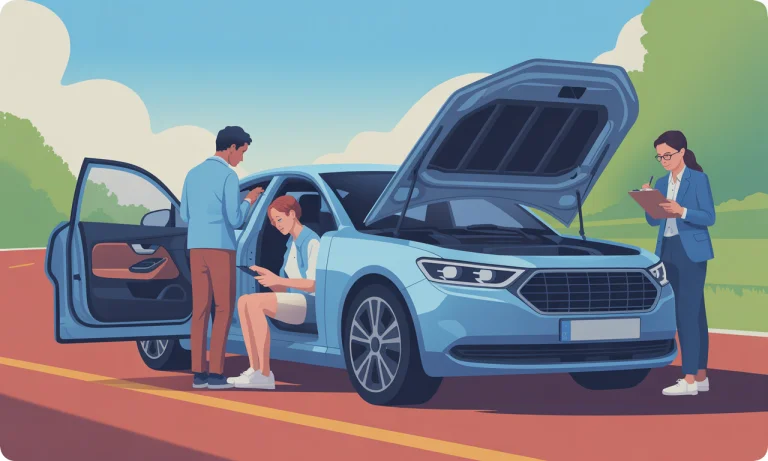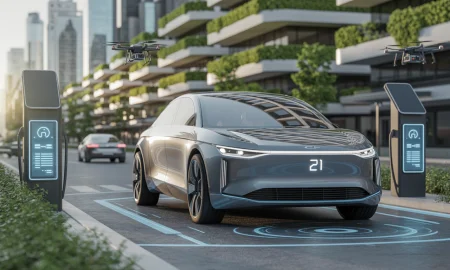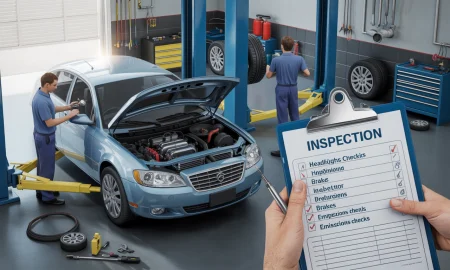As the auto market grows ever more complex, the experience of test driving a car has changed in 2025. Buyers now enter showrooms armed with expert reviews, knowledge of new tech, and a clear sense that their investment will shape their daily routine for years. For Daniel, a young tech analyst searching for a new ride, this was more than a routine errand—it was about finding a reliable companion for city commutes and weekend road trips alike. Amid the rows of Toyota, Honda, Ford, and Chevrolet models glinting on the dealer’s lot, he knew a test drive would tell him what the spec sheets and glossy brochures couldn’t. From subtle suspensions quirks to the tactile feedback of advanced infotainment systems, Daniel had learned that missing one key detail could mean months of regret. Whether scanning the lines of a BMW or feeling the grip in a Nissan, close attention before signing on the dotted line makes all the difference.
Key Steps Before Test Driving: Research and Preparation
Before Daniel walked into the dealership, he did his homework. Leveraging resources from sites like LeftLaneNews and official manufacturer portals, he mapped out performance specs, compared fuel efficiency (discovering the latest on electric vs gas with this guide), and read up on standard versus optional features for models like Kia, Hyundai, and Volkswagen. He printed a checklist, listing questions about hybrid options and advanced safety technology. Daniel also scheduled his test drive in the afternoon, knowing clear daylight would help him inspect both interior quality and exterior details. By the time he arrived, Daniel wasn’t hunting for surprises—he was verifying promises.
What a Thorough Inspection Looks Like Before the Drive
As he approached the Hyundai IONIQ and popped the trunk on a Volkswagen Atlas (learn more about the Atlas here), Daniel took in the little details—tread depth, any paint imperfections, the clean snap of door hinges. Climbing into the cockpit, he checked for ergonomic fit, making sure seat and mirror adjustments gave him a clear view, just as expert checklists advised. Testing the infotainment system, he paired his phone to ensure quick Bluetooth connectivity, imagining how this process would feel during a packed Monday morning. The tactile sensation of controls, from heated steering wheels to smooth running touchscreens, told him whether hype had met reality.
| Model | Key Features to Check | Inspection Points |
|---|---|---|
| Toyota Camry | Hybrid tech, advanced safety | Tire wear, infotainment responsiveness |
| Honda Accord | Driver assist, cargo space | Rear seat comfort, controls |
| BMW 3 Series | Drive modes, adaptive cruise | Acceleration, custom settings |
| Volkswagen Atlas | SUV seating, navigation tech | Backseat access, navigation tests |
| Hyundai Sonata | Fuel efficiency, lane assist | Quietness, visual blind spots |
Experiencing the Drive: Observing Real-World Performance
Once the wheels were rolling, Daniel paid close attention as he merged onto a busy highway. The Ford’s acceleration—smooth and predictable—felt different from the lively response of the Audi A4 he’d driven minutes before. He listened for stray noises: the faint hum of wind in the cabin, the clean engagement of the brakes, the way the suspension absorbed potholes in city traffic. At each stop, he toggled drive modes. If a check engine light flickered on—a rare but real possibility even for certified pre-owned Nissan or Chevrolet entries—he made a note and asked for a mechanic’s inspection before leaving. Through curves, parallel parking tests, or sudden stops, Daniel drew comparisons: which car gave him confidence, and which felt compromised in real-world settings?
Assessing Technology, Features, and Comfort Under Pressure
With new cars bristling with driver-assist tech, Daniel tested features like adaptive cruise in various traffic scenarios. Rotating through models—from compact Kia to luxury Audi—he noticed differences in lane-keeping and automated braking implementation. When switching from a hot sedan to a cooled SUV interior, Daniel activated seat ventilation and dual-zone climate controls, noting if they truly delivered comfort. For a full picture, he adjusted the sound system, then drove briefly in silence, attentive to any background rattle or drone. Each touchpoint, from the depth of a cupholder to the clarity of a 360-degree camera, shaped his sense of which car would support his lifestyle and which, despite its high rating, might disappoint over time.
| Feature Tested | Impacts on Daily Use | Tips from Pros |
|---|---|---|
| Blind Spot Monitoring | Highway safety, stress reduction | Practice fast lane changes |
| Infotainment System | Navigation, seamless audio | Test phone pairing speed |
| Automatic Parking | City convenience | Try parallel parking in tight spots |
| Adaptive Cruise Control | Long journeys ease, fatigue | Test in mixed-traffic conditions |
| Seat Comfort | Long-haul comfort, posture | Sit for at least 20 minutes |
Negotiation, Reflection, and Making the Right Choice
After each test, Daniel paused to jot observations and compare them to his notes from market guides and user reviews. On advice from an insider at LeftLaneNews, he resisted dealer pressure to decide immediately. Instead, he inquired about available promotions and warranty coverage—sometimes unlocking incentives not mentioned online. Reviewing the numbers with a calculator, Daniel read up on negotiation strategies (as detailed here) before finalizing an offer. If something didn’t feel right, he stepped away, confident another test drive tomorrow could tip the scales.
Comparing Models and Long-Term Satisfaction
The difference between a satisfying car and a headache often comes down to small details revealed during a thorough test drive. Daniel ranked each model’s strengths in a table, from the practical trunk space of a Honda Civic to the roaring turbo of a BMW. He weighed trade-offs, thinking about fuel budget (see more options here), insurance estimates, and the cost of upkeep for brands like Audi versus Nissan. Before signing, he double-checked maintenance needs—useful links like this guide prepared him for surprises down the road. In 2025, with car tech evolving rapidly, these calculated steps helped him feel assured with every mile to come.
Frequently Asked Questions About Test Driving a Car
How long should a comprehensive test drive typically last?
Ideally, a thorough test drive should last at least 30 minutes. This allows you to experience different road conditions—city streets, highways, tight parking lots—and compare how models like the Toyota Camry or Nissan Rogue respond in varied scenarios.
What should I bring with me for a test drive?
Bring your driver’s license, a list of feature and performance questions, and, if possible, any personal items you plan to use in the car regularly—such as a car seat or stroller. This helps you check compatibility, especially in SUVs like the Volkswagen Atlas (more info here).
If I find small defects during the test drive, should I reject the car?
Not automatically. Document what you find (scratches, odd noises), share this with the dealer, and request a follow-up inspection. Particularly for used vehicles from brands like Ford or Kia, use these findings to negotiate for repairs or a better price—detailed in this article.
How do I know if a car’s tech features are truly user-friendly?
Test every relevant feature—from adaptive cruise to infotainment menus—while parked and in motion. If something feels awkward during a brief drive, it may become frustrating in everyday use. You can also watch in-depth reviews or owner testimonials before your drive.
Is it beneficial to test drive in different weather conditions?
Absolutely. Rain or snow can reveal how a car’s visibility, traction, and safety tech perform under stress. If possible, schedule a second drive or wait for changing weather to get a true feel for real-life performance.
Did you like it? 4.4/5 (29)







